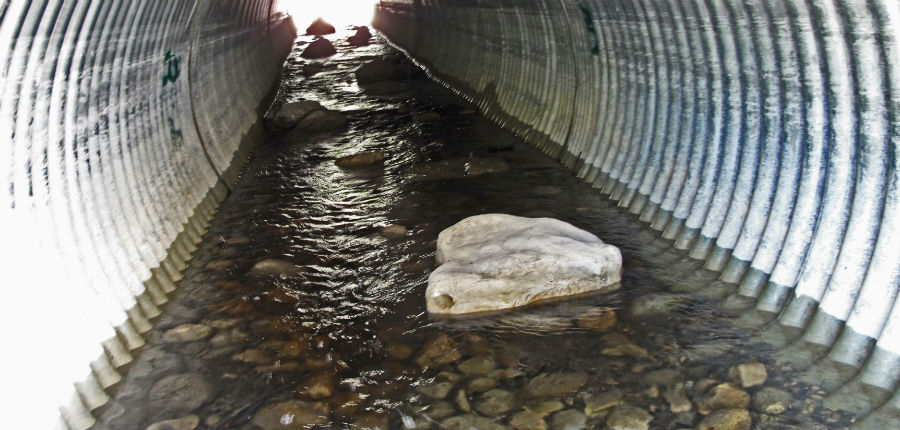
Stream Crossings Standards
Culvert and bridges must be designed to safely pass the design storm. In addition, they must be designed to comply with stream crossings standards. Proposed crossings must provide for Aquatic Organism Passage, or AOP. As a result, state design standards follow the US Army Corps of Engineers requirements for stream and river continuity.
For larger streams, bottomless arch culverts are preferred. Culverts can be used for smaller streams, but they must be embedded below the stream bed and partially filled in with rock and gravel in order to allow for a natural stream substrate on the bottom of the culvert. Both the inlet and the outlet must be aligned to avoid a ‘perched culvert’ that creates an obstacle for fish and invertebrate passage. Full bank to bank stream width is required to avoid any constriction in the stream channel at the crossing. Rip rap placed in the culvert must be designed to handle the stream velocities and provide for a low flow channel.
Stream crossings with larger spans typically employ bottomless arch culvert designs that span the stream or river. These arch culverts, which can be made from corrugated steel, aluminum, or precast concrete, have footings at each stream bank, with the arches bearing on these footings. Headwalls of similar materials are provided at both the upstream and downstream sides of the crossing. Tradition bridge design can also meet this standard provided the abutments are set back sufficiently from the stream banks.
Vermont Stream Alteration Permits
Vermont requires a Stream Alteration Permit to install a crossing on a perennial stream. The General Permit program helps to streamline the permitting process. Stream crossings must comply with the Vermont Stream Crossing Handbook. A wetland permit from the state of Vermont or the Army Corps of Engineers may also be required.
Massachusetts Stream Crossings Standards
Massachusetts requires stream crossings comply with the Massachusetts River and Stream Crossing Standards. The state provides the Massachusetts Stream Crossings Handbook to outline the requirements. Stream crossings requires a wetland permit under the Wetland Protection Act and the Notice of Intent which is filed with the local Conservation Commission.
